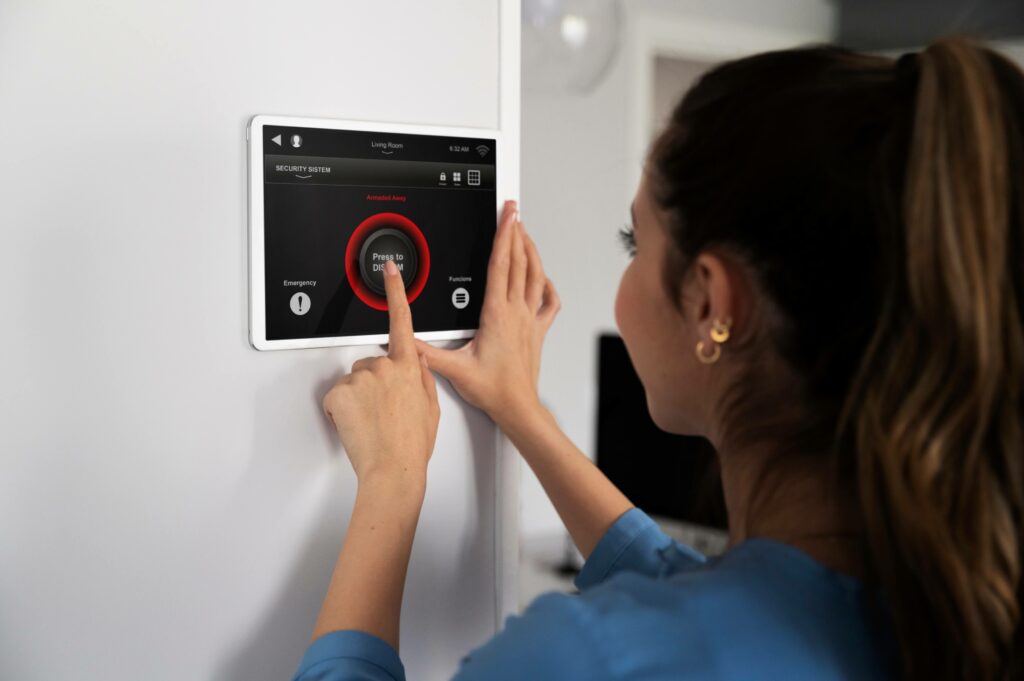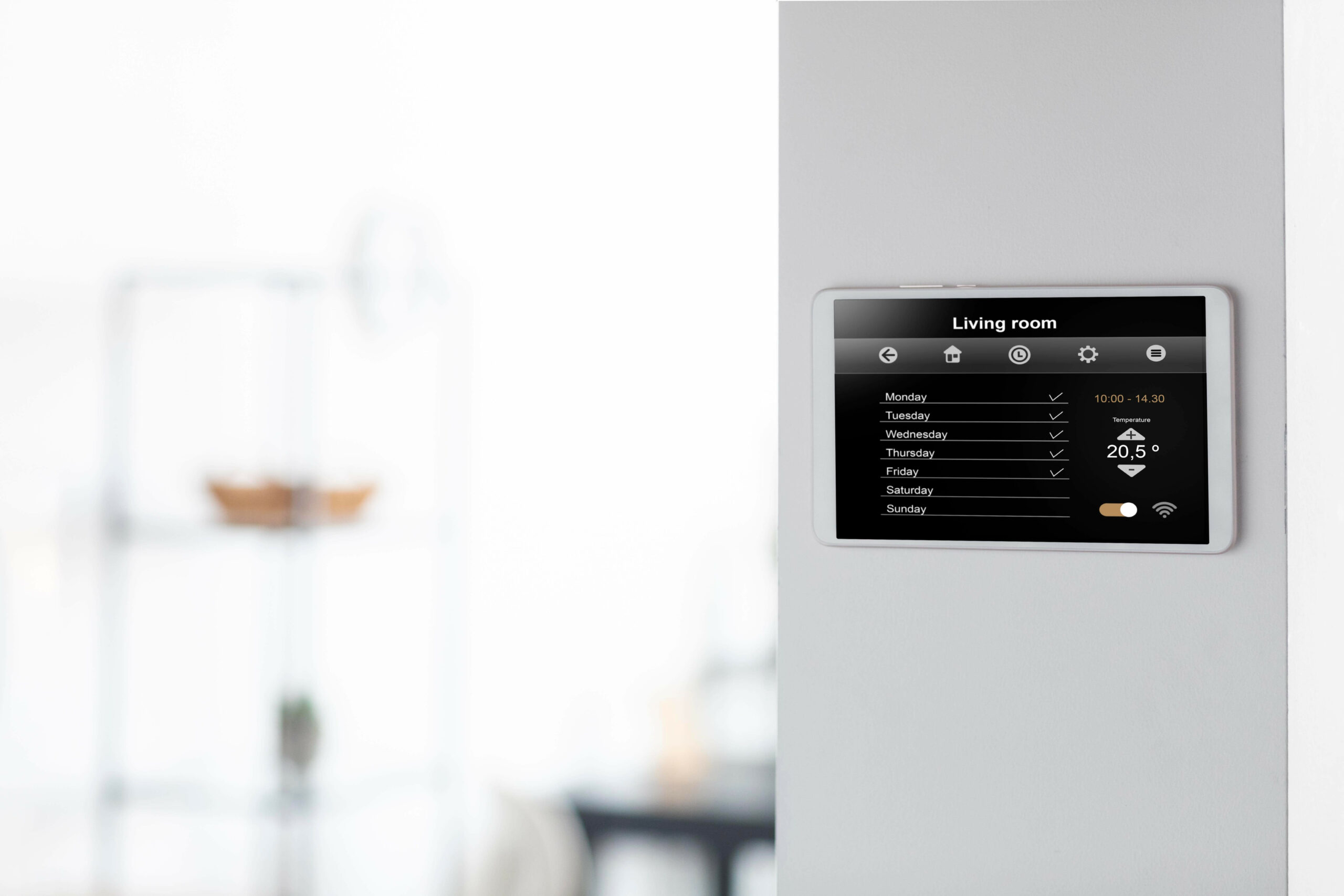Most modern homes now use a smart meter. They are a valuable way to monitor how much energy you are using in near real-time, while also helping to keep energy usage and costs as low as possible.
For both providers and consumers to access this information, data is shared between the smart meter, a cloud system and, if building appropriate, a smart meter gateway.
So, this begs the question, how do smart meters communicate? And what role does the Internet of Things (IoT) play in smart meter connectivity? Please read this post to find out more.
How do smart meters work?
Smart meters are IoT devices installed in homes and businesses that measure electricity, water and gas usage.
Unlike traditional meters, which simply display a running total for the property, smart meters can provide time-sliced usage and cost information as well as information from energy providers using an in-home display (IHD).
These devices enable time-sliced or real-time energy tracking by sending information back to utilities or third parties about how much electricity is being used and when.
Smart metering is, therefore, a national infrastructure investment and commitment that benefits both the energy supplier and the consumer at home.
Also known as sub-metering, providers can more accurately monitor and adjust rates to prevent overcharging, while consumers can better understand and manage their energy consumption.
Smart meter gateways play a crucial part in energy conservation efforts, as they are the interface between the meter and its communication network.
What role does IoT play in smart meter communication?
IoT as a concept or trajectory of how to install, deliver and monitor solutions at scale, is at the heart of the future deployment of smart technologies, and it has been for some time.
Through this technology, IoT devices can transfer small and large quantities of data over a variety of local connectivity mediums and routing which means that a variety of devices and systems can securely communicate over extraordinarily long distances all while using minimal power at a low cost.
This allows utilities to collect more detailed information about energy consumption, enabling more accurate distribution loading, balancing and billing.
As importantly, IoT technology enables smart meters to send real-time data to the utility company and receive remote commands from them to make changes in the home or business’s energy use. This is becoming especially important as large-use devices become more prevalent in buildings and homes.
The highest profile is EV Charge Points. EV charge points will need to be not only connected for owners to plan and manage their charging profiles and costs but also for Power Distribution Network Operators.
This is so they can control usage and demand to not affect critical infrastructure and to enable them to manage peak load times. This process can also mean utilising MID meter functionality to ensure that EV Charge points are properly calibrated.
The Internet of Things also helps to improve the accuracy of power consumption readings and enable more efficient energy management. By automatically collecting data from multiple points, providers can monitor energy usage across time periods, identify potential problems and act quickly.
In addition, IoT technology makes metering systems more dependable due to its intrinsic system design and supporting infrastructure. Meaning data can be collected and transmitted over long distances without interruption or delay.
How do smart meters communicate?
As we mentioned previously, IoT technology is at the heart of smart meter communication, allowing millions of devices to be connected near-simultaneously (note; it is always advisable to create a randomised time-spread to not overload network infrastructure).
The supporting IoT infrastructure and expertise mean that maximum up-time can be deliverable at scale. But like all IoT devices, smart meters require a reliable series of network connections to function.
Whether it’s transmitting directly to the cloud or a local smart meter gateway, various communication protocols are used to securely facilitate data transmission and exchange.
The most used communications for smart meters are cellular networks, radiofrequency (RF) and wide-area networks (WANs). RF connections offer cost-effective, long-range and are ideal for areas with multiple smart meter installations. WANs on the other hand, are more suited to buildings with complex network topology and require higher bandwidths.
Cellular connectivity is the most common. Many devices (or their gateways) use mobile networks due to their ubiquity, multi-network resilience and independence from the home network.
It is worth noting, however, that the connectivity needs for smart meters and smart meter gateways are different, each requiring its own unique solution.
This could depend on the network, data link and the transport layers within the network’s architecture.
For that reason, we have broken down smart meter connectivity into three main groups:
- Smart meter to gateway
- Smart meter to cloud
- Gateway to cloud
Smart meter to gateway
When transmitting data to the cloud, smart meters can use a few connectivity options. Newer buildings tend to use smart meters with hardwired connections to a gateway.
This means that one or several smart meters can communicate locally with a gateway, which aggregates communications and transmits and receives with the Wider Area Networks.
These local wired protocols between the smart meter and the gateway can include Ethernet, Power Line Communication (PLC) and Meter Bus (M-Bus).
When using higher capacity links such as Ethernet cables, providers don’t need to worry about data limitations and can therefore transmit more frequently.
M-Bus (EN 13757-2 physical/link layer, EN 13757-3 application layer) is a two-wire solution used for short-distance communication and is ideal for connecting multiple meters to a gateway.
Although PLC may be the simplest option for smart meter communication, it is less dependable than other wired options.
Alternatively, there are a wealth of smart home/building wireless protocols that can be used for a smart meter to gateway communications, including Wi-Fi, Lora WAN, Zigbee, Z-Wave, MIOTY or Wireless Meter Bus.
Wireless M-Bus is a European industry standard for wireless mesh networks and can be used to link both gas and electricity smart meters. Simply, it is a wireless version of the standard M-Bus. Secure, dependable and appropriate for short-range communications.
Lora WAN is another option for smart meter communications as it not only provides local distanced coverage 1km to 3 km in urban environments) to a gateway, but it also offers extremely low data rates and low frequency of communications. Its low power consumption requirements are ideal for battery-operated devices.
A Lora WAN solution, however, is dependent upon private networks deployed by Lora WAN providers or groups of them. This means that an agreement will need to be made with a Lora WAN provider which may not provide ubiquitous coverage.
Due to Lora WAN not being part of the GSMA standards, mobile base stations do not support it and there are no roaming agreements between Mobile Network Operators (MNOs). This means that you will either need to manage multiple Lora WAN contracts or deploy your own gateway with GSM functionality built in for the backhaul element of the communication.
An alternative solution to Lora WAN is Sigfox. In areas where Sigfox is available, you can use its low-power wide area network (LPWAN) protocol to connect smart meters directly to the cloud. It is important to note, however, that Sigfox is again a private commercial network designed for extremely low data rates and is only available in certain regions – so if you’re looking for global coverage or an option that can transmit more data, other solutions are more suitable.
Zigbee is a local radio network which uses a mesh network topology and is one of the leading smart home wireless protocols for IoT. It offers two-way communication, low power consumption and fast data rates. Its mesh functionality means that meters and sensors can use each other as hopping points to reach the IoT gateway. This can be useful for long or complex buildings. Zigbee, however, uses an unlicensed, and often crowded, 2.4GHz band that doesn’t penetrate walls or buildings too well.
MIOTY, on the other hand, is specifically designed for low-power wide area networks (LPWAN). It has a similar range to Lora WAN. It uses time-synchronised channel hopping (TSCH), but offers superior levels of data security, making it ideal for mission-critical solutions.
This solution requires minimal infrastructure to deploy and is commonly used for large scaled industrial IoT applications.
Last, is the ubiquitous Wi-Fi. Although you could use Wi-Fi for smart meter communications, its networks aren’t the most reliable or well-suited for the use case. Wi-Fi can come with a range of security issues and its power requirements are generally high.
It does, however, offer the freedom of using the homeowner’s Wi-Fi network, which is a methodology fraught with downtimes, competition with bandwidth-heavy entertainment packages and the dread of a homeowner-initiated router, ISP or password change which will render the smart meter functionality useless.
Smart meter to cloud
Another method smart meters use to communicate is smart meter to cloud communications.
This solution is best suited for buildings with only one smart meter, where setting up a gateway could be considered too expensive or involve redundant hardware which is unnecessary considering the small size of the property.
Direct smart meter to cloud communication is also a reliable option, requiring minimal infrastructure, as all communication is performed using ubiquitous and dependable and regulated cellular networks – meaning you don’t have to worry about unlicensed band signal interference or very short-range limitations of other proprietary unlicensed solutions.
Cellular networks (most notably LTE-M) offer a secure connection, even in remote locations, and can be managed easily by leveraging cloud-based platforms. Using features like Power Saving Mode (PCM) and Discontinuous Reception (DRX), a smart meter’s operations can be optimised.
Gateway to cloud communications
Due to their nature, smart meter gateways need to be able to receive data from a wealth of other types of meters (for example, smart plugs, sockets and consumption devices) and transmit that data to the cloud services.
TCP/IP throughput is usually required for this process and most solutions are connected directly to a power outlet, making power-saving capabilities a less essential consideration.
A wired Ethernet or Digital Subscriber Line (DSL) is a workable solution for gateway to cloud communication. Enabling transmitting via TCP/IP or UDP/IP to the cloud with standard VPN architectures if needed.
The most significant disadvantage of DSL is that some homes do not have fixed telephone lines, making this solution non-viable.
A wireless mobile/cellular IoT network infrastructure is the most convenient, secure and ubiquitous available solution for smart meters and their gateways. This should be a global IoT infrastructure that needs an IoT SIM card as its passport to connect to all locally available mobile networks.
For manufacturers of smart meters, the global roaming capability of IoT SIM cards makes them the most viable option for global deployments.
Additionally, cellular signals offer excellent coverage and can also penetrate most domestic building materials better than many other unlicensed connectivity solutions. Whether it’s 4G, 5G or LTE-M, cellular networks are reliable and secure enough for smart meter gateways to use TCP/IP, UDP/UP and VPN solutions for the management of devices and data security.
Wi-Fi is another option to consider, but as mentioned earlier, it comes with some significant drawbacks that can create problems, both for individual properties and at scale.
Expert IoT connectivity
Thank you for reading our post on how smart meters communicate and the role IoT plays.
To discover more about the Internet of Things, IoT SIM Card connectivity or IoT challenges you may face, please contact us today. We’d be more than happy to answer any questions you may have.
Let us help you get connected – it’s what we do best!



